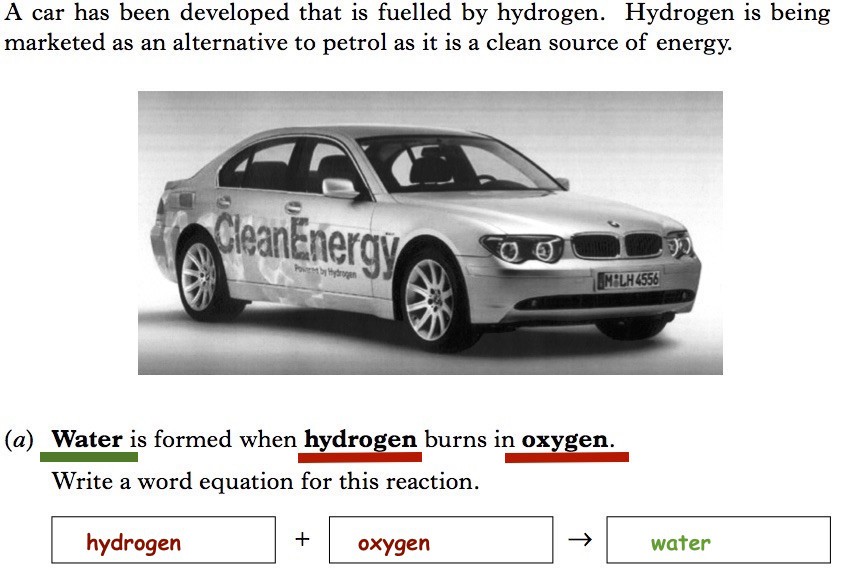Equations in Chemistry are written in the form:
Reactants → Products.
It is important that the arrow is included. The arrow means reacts to form. An equals sign must NEVER be used as the reactants are NOT the same as the Products.
When given a question and asked to write a word equation it is a good idea to underline the reactants in the questions, and write them on the left side of the equation. It is not always the case that the reactants are named fist in the description given, so care must be taken to ensure that the correct chemicals are underlined. If more than one reactant is used, each reactant needs to be separated by a plus (+) sign.
The two sides of the equation are linked by an arrow, so draw the arrow next.
Using a different coloured pencil if possible, underline the products and write them on the right hand side of the equation. Again if there is more than one product, each product is separated by a plus sign (+).
Examples:

 water + calcium phosphide → calcium hydroxide + hydrogen + diphosphane
water + calcium phosphide → calcium hydroxide + hydrogen + diphosphane


